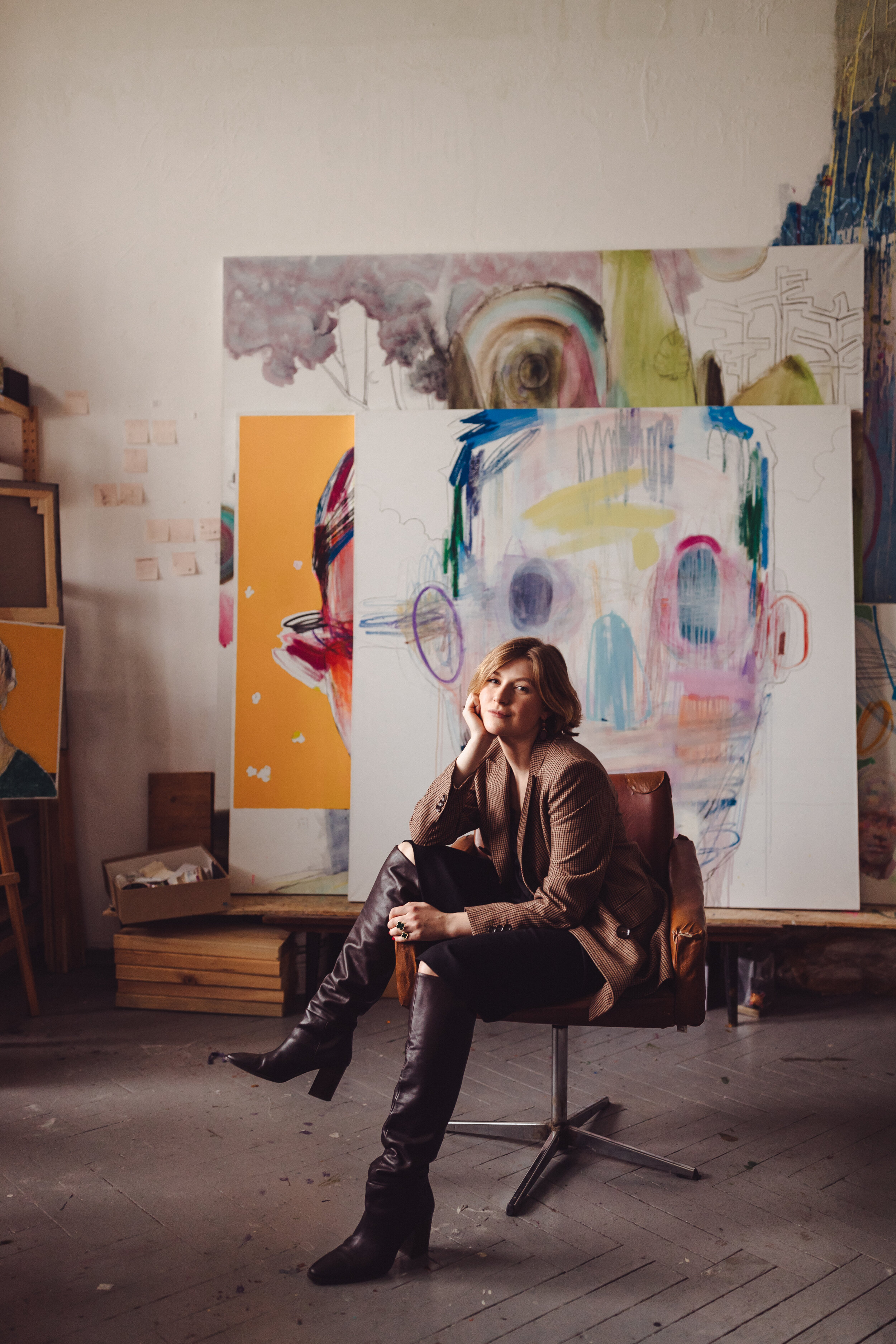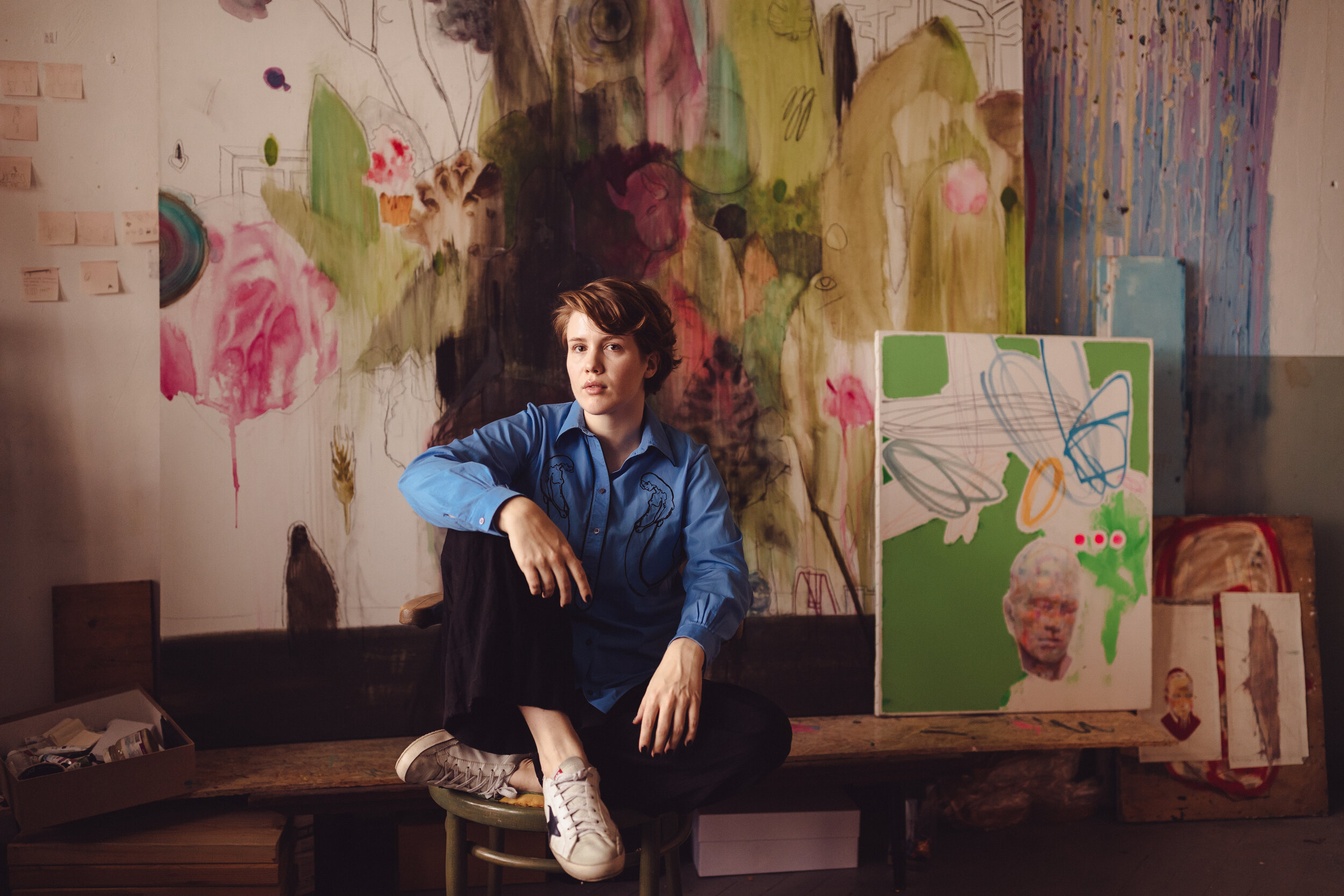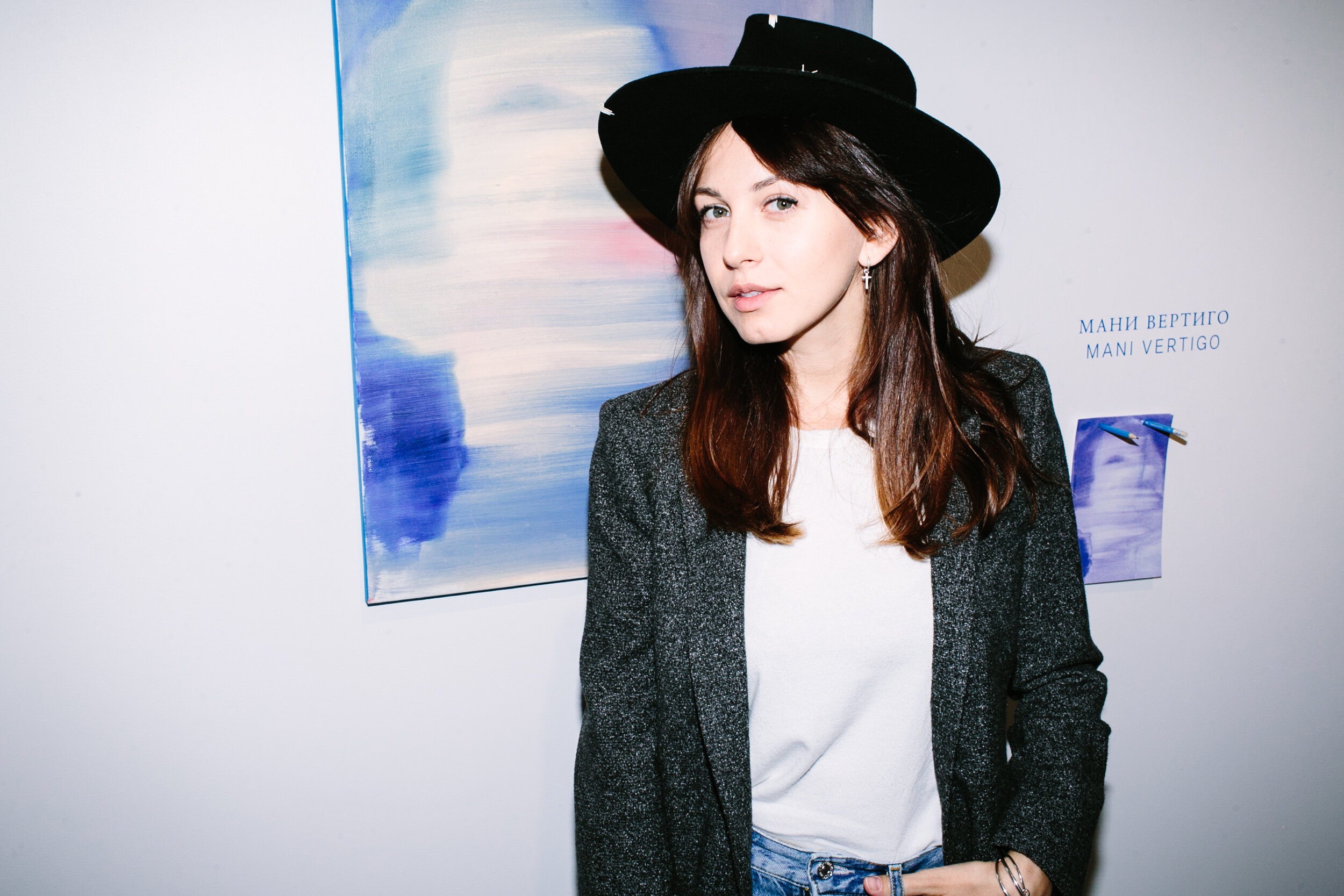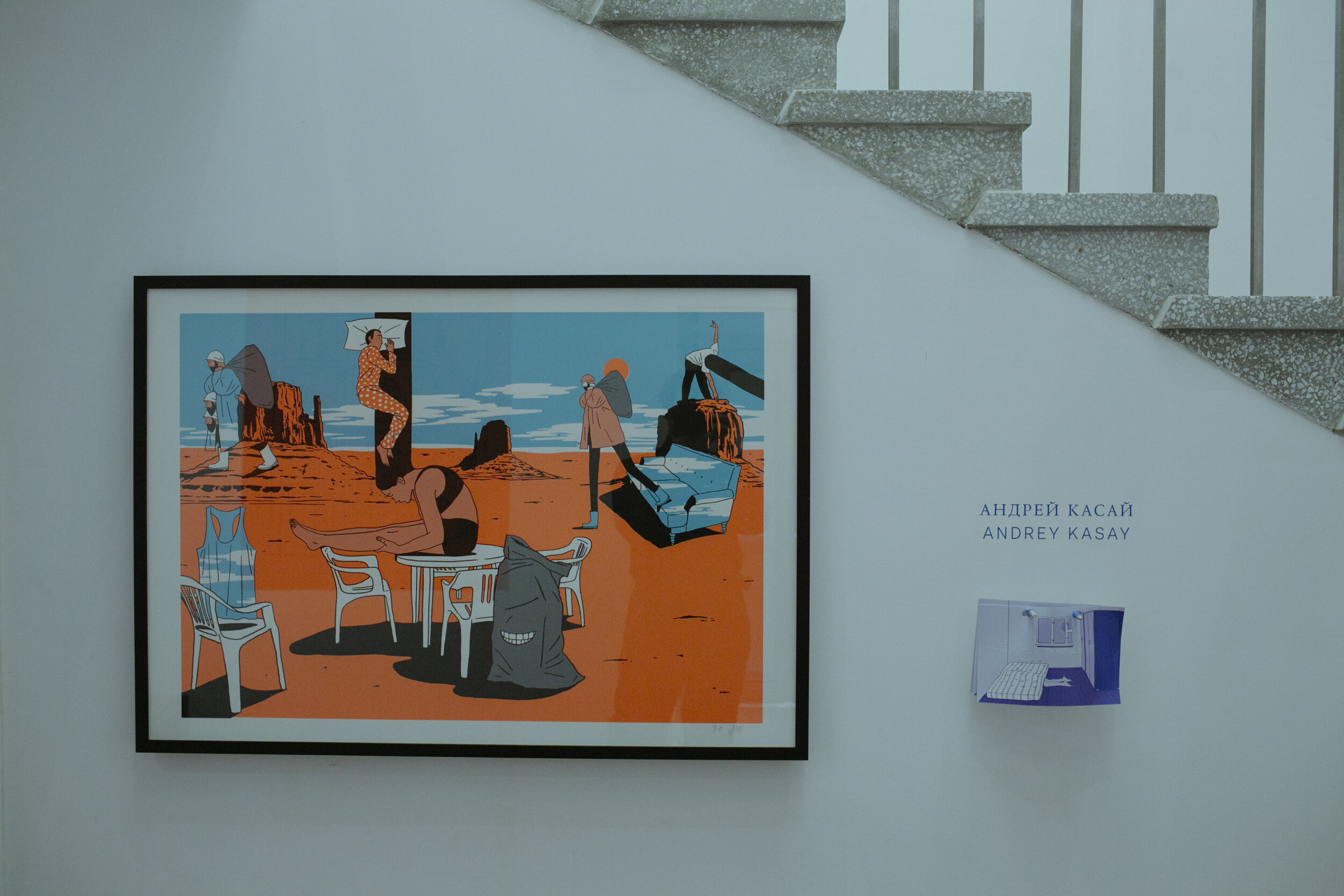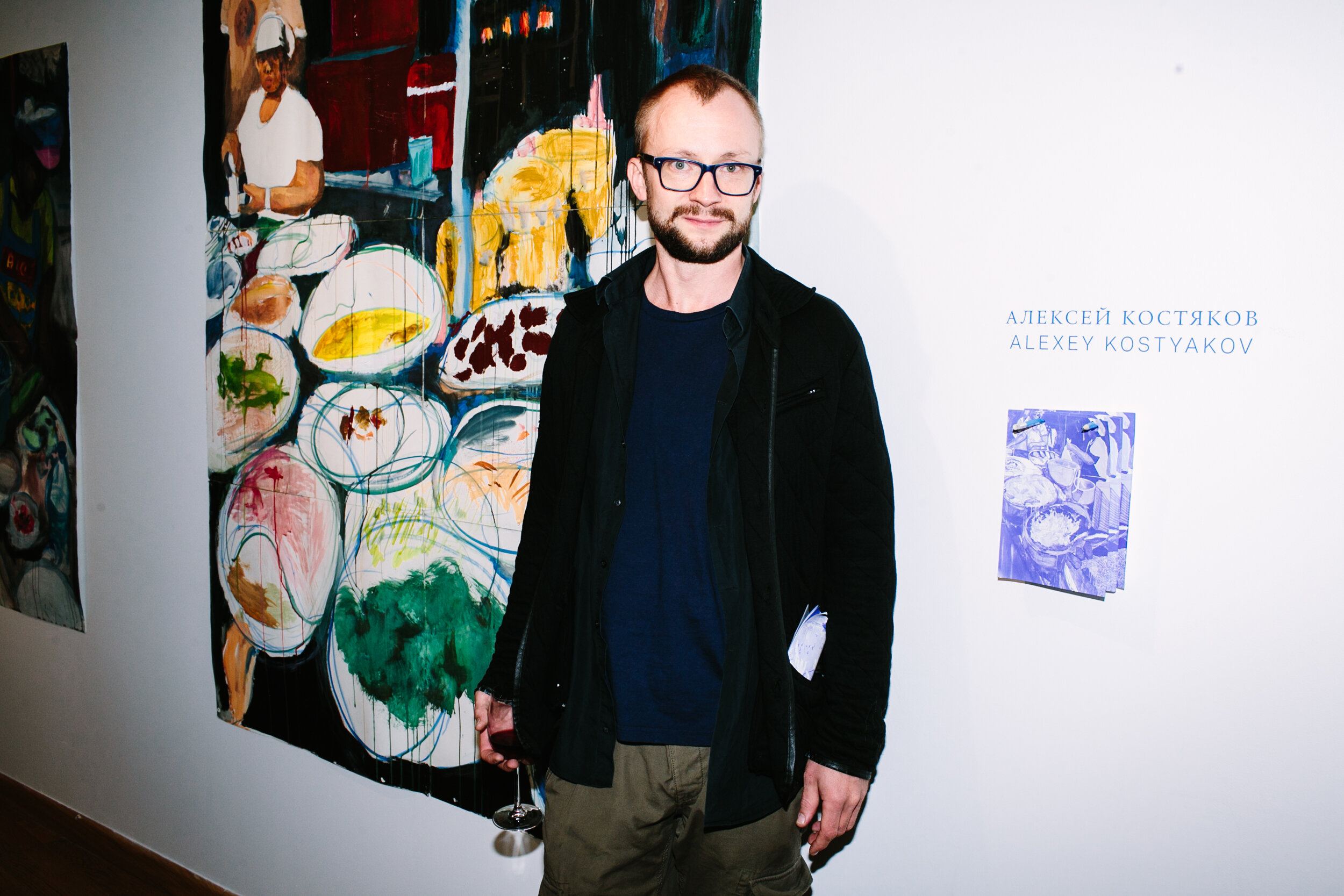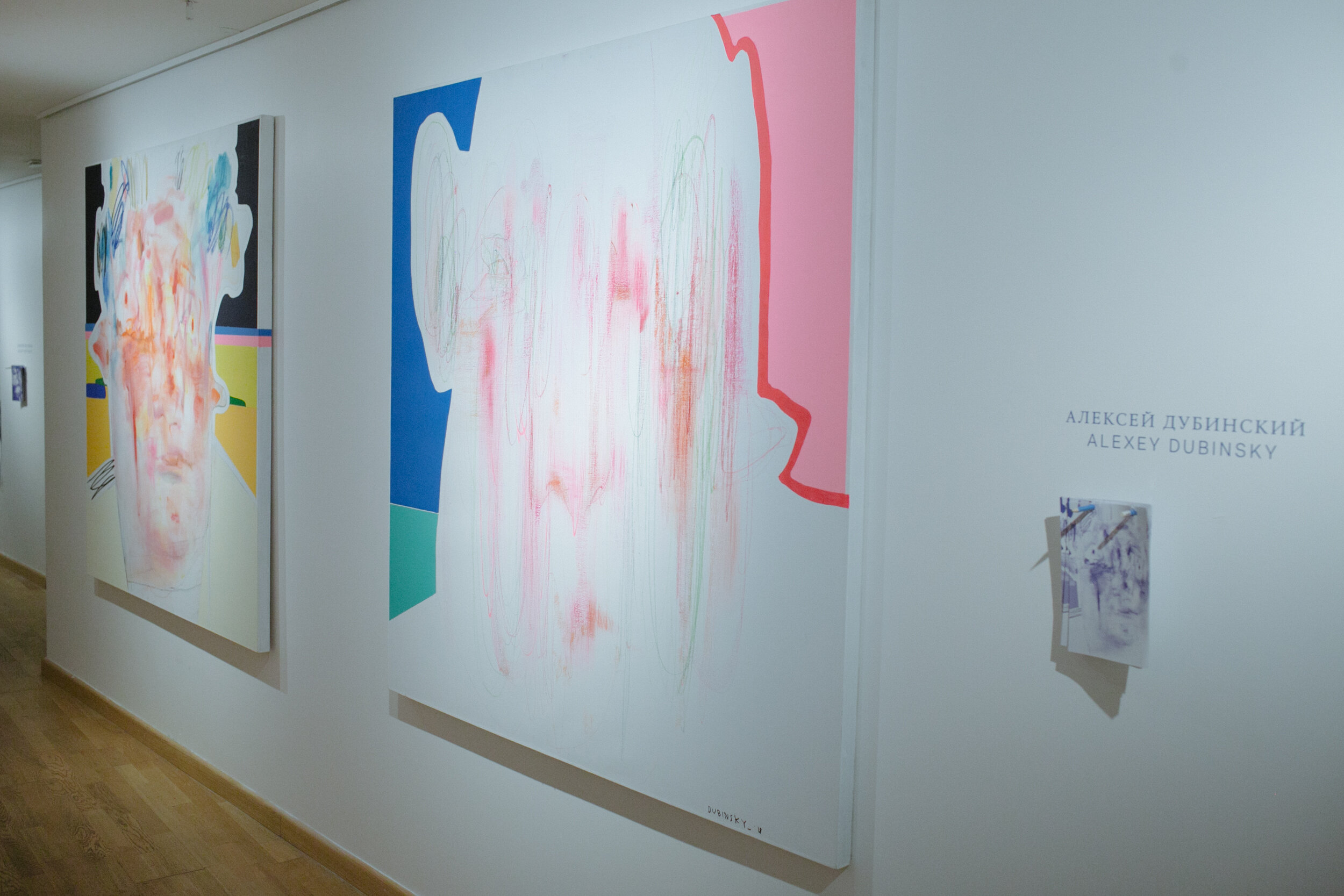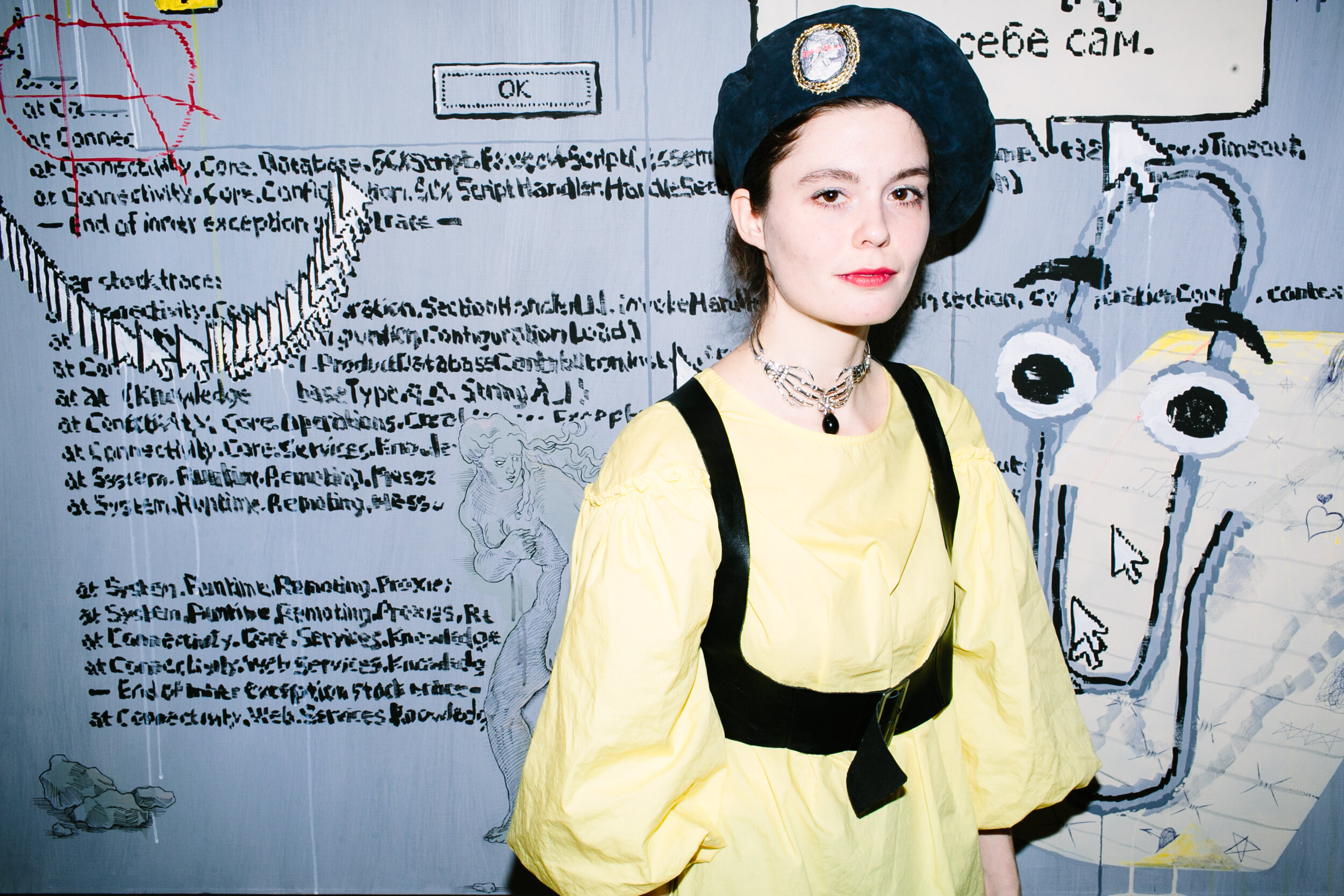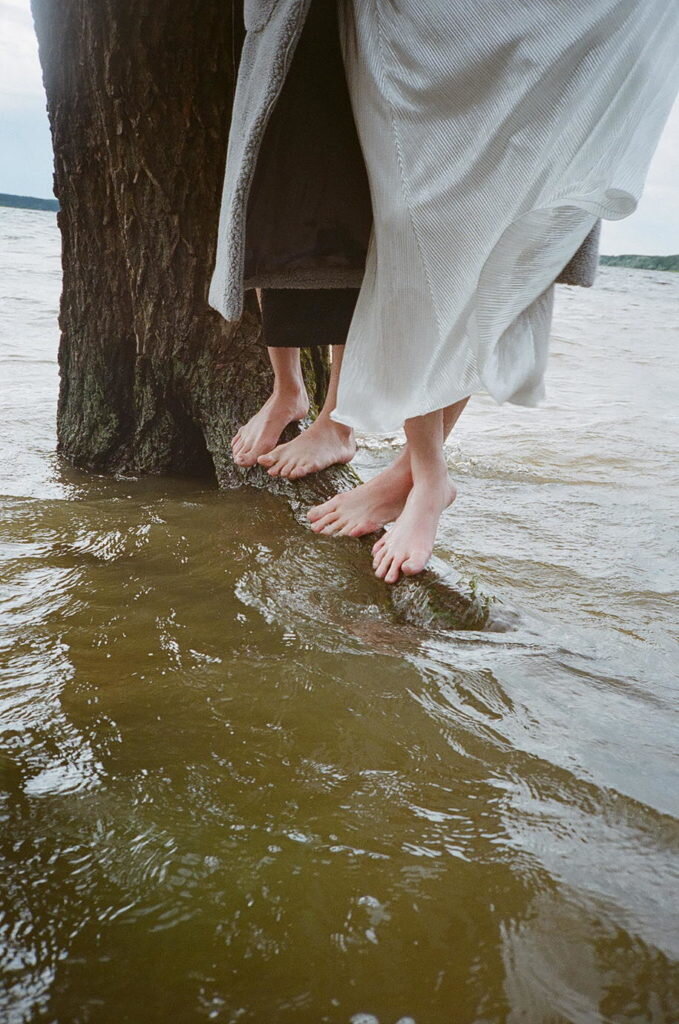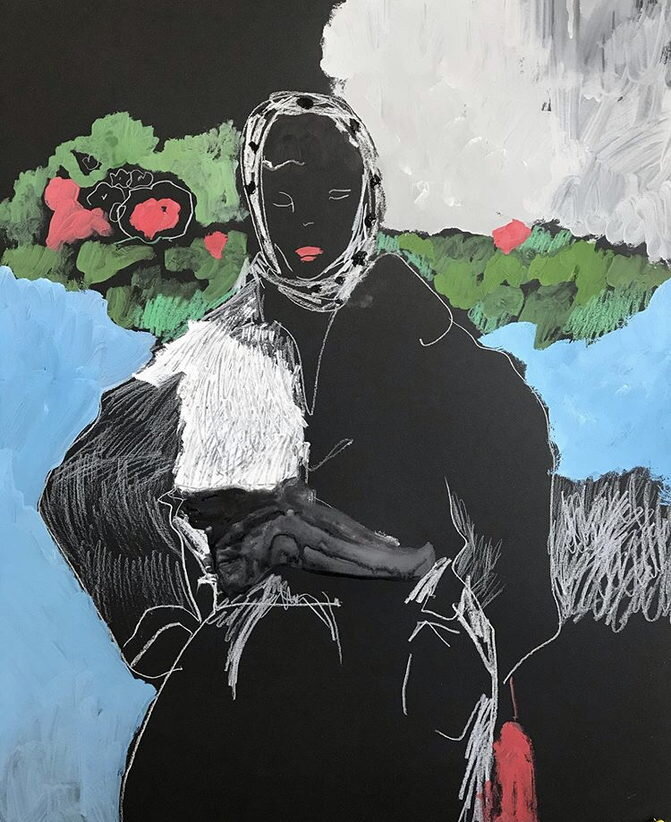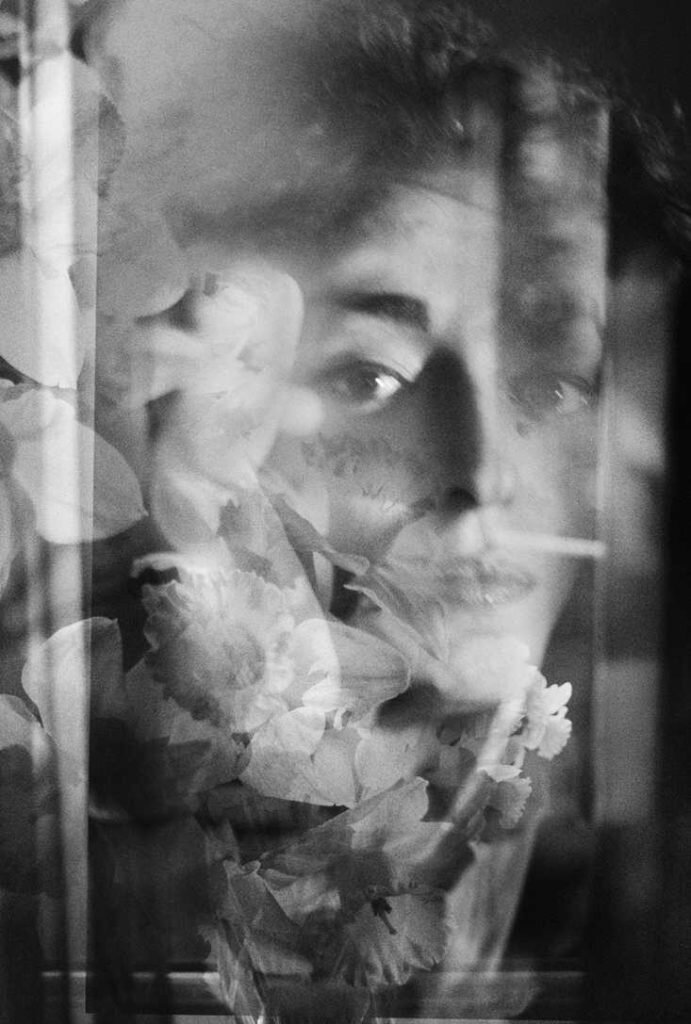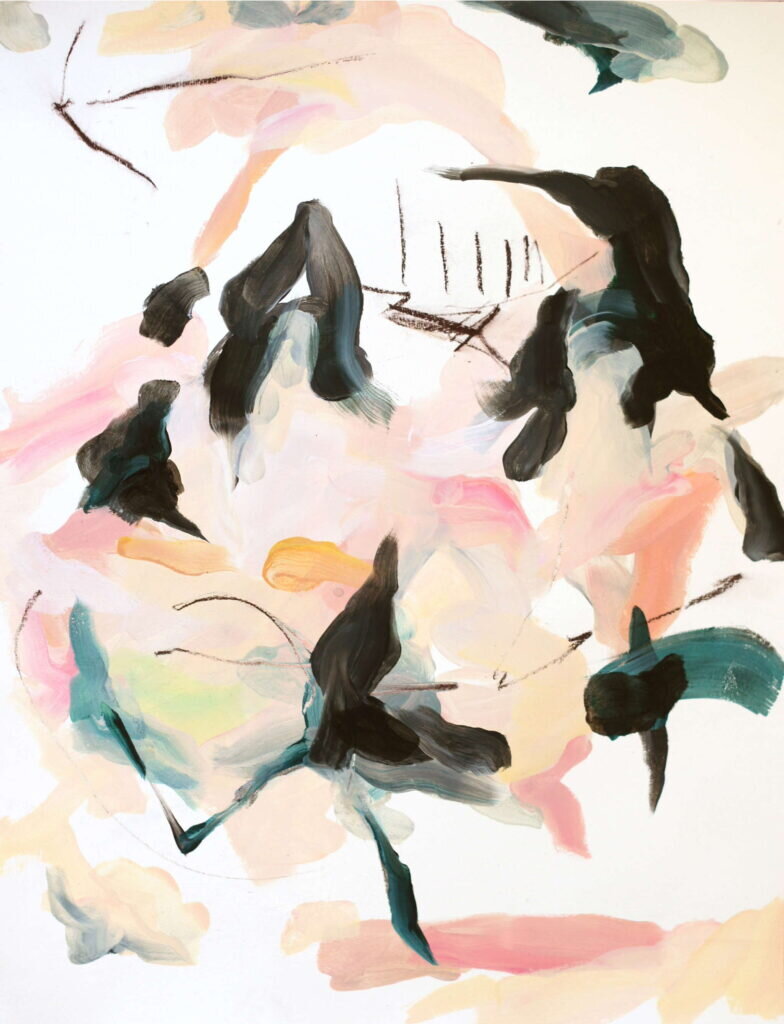Anna, Sofya & Alexandra, founder of SAMPLE
The small multidisciplinary SAMPLE project team have, for almost four years, been supporting, introducing, and presenting the work of young emerging artists from different parts of the globe. Breaking the stereotypes about contemporary art and its accessibility, they have worked with more than 40 artists and have organised dozens of events and auctions, as well as curating exhibitions with prominent Russian cultural institutions. We met with the co-founders of the project Anna Naumova, Sofya Simakova and Alexandra Lekomtseva to discuss their vision, their future plans and strategy, as well as the way they work with their audience.
Tell us more about the history of the auction’s creation? How did everything start?
Anna : The SAMPLE project has existed for almost four years. We held our first auction in the fall of 2016, but I had organised my first auction even earlier when I was studying at the British Higher School of Design and Art. This auction had a very informal and relaxed format, and it was visited mostly by my friends. Not many people participated, and we sold our works for symbolic money. Later, I met Sofya in the Triumph gallery, where she was a curator at that time. Together we came up with the auction format. We both had a lot of friends-artists who were looking for an audience and buyers, and we knew that there was a Russian audience that was ready to buy artworks of young authors for a small amount of money. We made the first website ourselves, gathered artists, and organised the first auction in just a few weeks. The format of the auction was planned to be regular, and we tried to hold a certain amount of offline events every season. A year and a half later, Alexandra joined us, and we gradually began to expand.
Photo below by y Max Avdeev for The Blueprint.
Are you more focused on the Global or the Russian market?
Anna : Currently, we are mostly working in the Russian market and, of course, we would be interested in the enhancement of our presence and in showing Russian artists abroad, because this is quite an interesting case from the commercialisation point of view. We work with works that are good quality, competitive and are sold here several times cheaper than they would be on the American or European markets.
Do you see interest from foreign collectors in Russian contemporary art?
Anna : Speaking about some demographic features, I would like to highlight that the SAMPLE project aims to enable more people to start collecting contemporary art. When we talk about our collectors, we often talk about people who are taking their first steps in this field, not about people who already have a collection. Often, these are people who buy some artworks for their interiors, for themselves, their relatives or friends. If we are talking about serious collectors who are interested in the markets, perhaps our colleagues from Cosmoscow can better answer this question and assess the trends and interest in Russian art from foreign collectors, as they interact with them more often. ⎨Read more on Cosmoscow with the interview of its founder, Margarita Pushkina⎬ I think that the interest in art, in general, is global, especially in the art of those countries that are in some way seen as white spots.
How do you cope with the difficulties caused by COVID-19? I saw that you had organised several auctions during the lockdown period. Can you give us some details?
Sofya : It was always hard to formulate a precise strategy for us, but this is the case especially nowadays due to the pandemic and all the difficulties related to it. But the SAMPLE project is quite flexible, and we are happy to follow new influences and trends. During the lockdown, we conducted a series of online auctions for the first time, which was unexpectedly successful. The results of the auctions were similar to our offline auctions.
Among these auctions were projects we led together with the HSE ART GALLERY, the SZENA gallery and MUAR. We were able to rebuild our activity quickly, and we find this new format very interesting. That’s why we plan to launch a series of online auctions as a complement to the traditional offline ones. In addition to auctions, we decided to make part of the exhibitions available in an online format. Our platform is unique in this regard and provides us with the opportunity to make sales directly through the website, as well as to integrate this with our exhibitions.
Do you plan to develop other formats of interaction with your audience (webinars, toolkits, articles, market reports and insights)?
Alexandra : As Sofya highlighted earlier, the project is very flexible. When I joined the project two years ago, we jointly identified a development strategy, but for the short term. Over the past two years, we have worked with various cultural institutions and tried different formats of events. We planned several public-talks and webinars on collecting with artists and "big" collectors. For example, during the exhibition in Gorky Park, we curated a discussion with Anton Belov (director of the Garage Museum of contemporary art), Dmitry Khankin (founder of the Triumph Gallery) and Maxim Bokser, where we discussed the topic of collecting in general, some trends in Russia, etc. And of course, our activities are generally aimed at developing and supporting artists. What does it mean for us? It means our direct contribution to the development of the art market, and as a result, direct work with various participants of this market, including the audience. We are currently working on a new strategy and further plans. But our intention to strengthen partnerships not only with sponsors and institutions but mainly with our audience will remain at the core of our activities. Therefore, in addition to exhibitions and auctions, we would like to further develop such parallel events as meetings, lectures, discussions, and so on.
Which benchmark can you identify? Are there any auction houses that you want to be alike?
Anna : In a global sense, we probably do not have a single guiding line, a model that we would like to reproduce. But there are, of course, projects that we appreciate and that inspire us. For example, on the American market, I like the Tappan Collective project. And I think that somehow we were able to manage to create something similar for Moscow. From the logistics point of view, we probably strive for a lot of aspects. I wish our artists and art, in general, to be more accessible around the world. And this is what we will work on in the future.
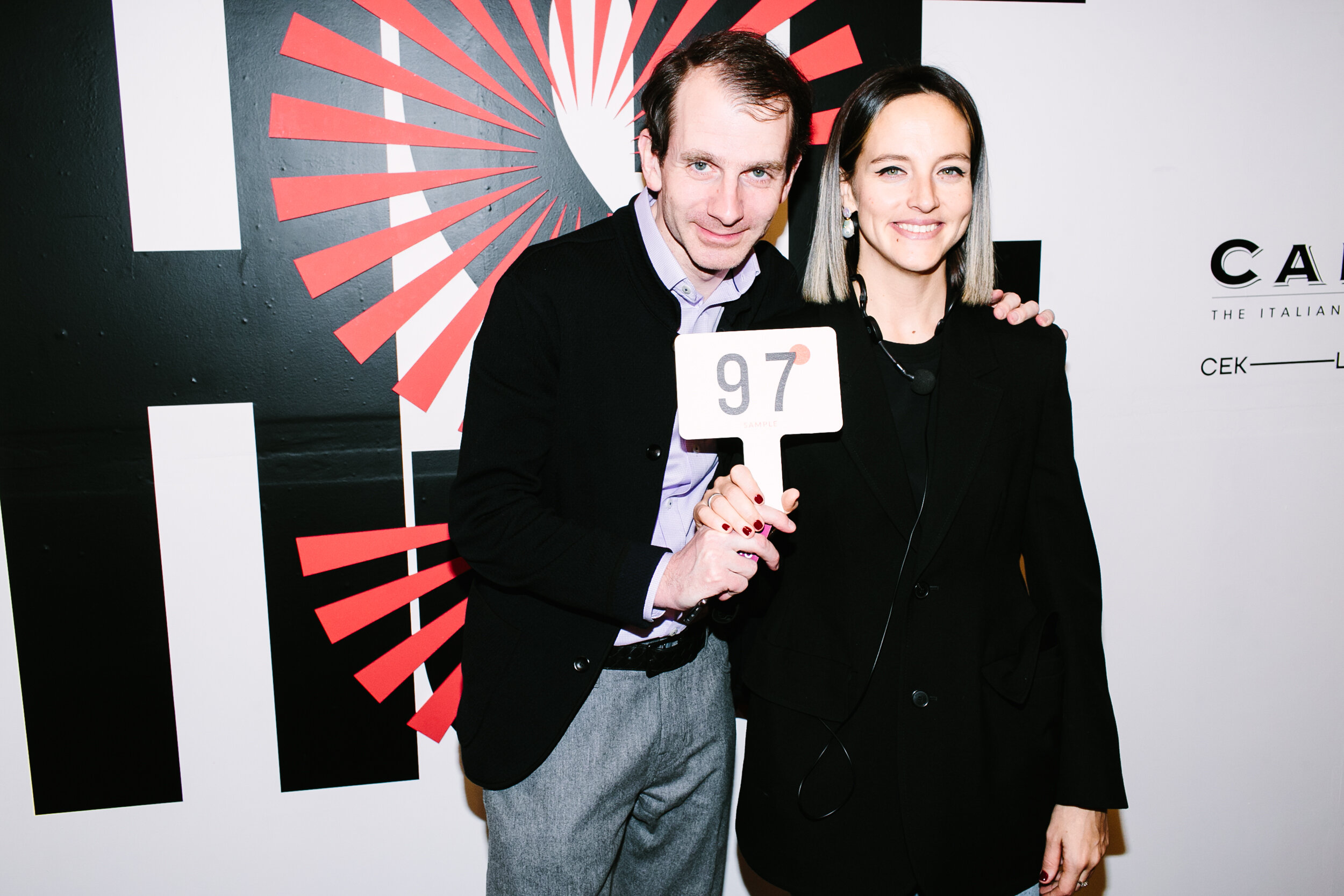
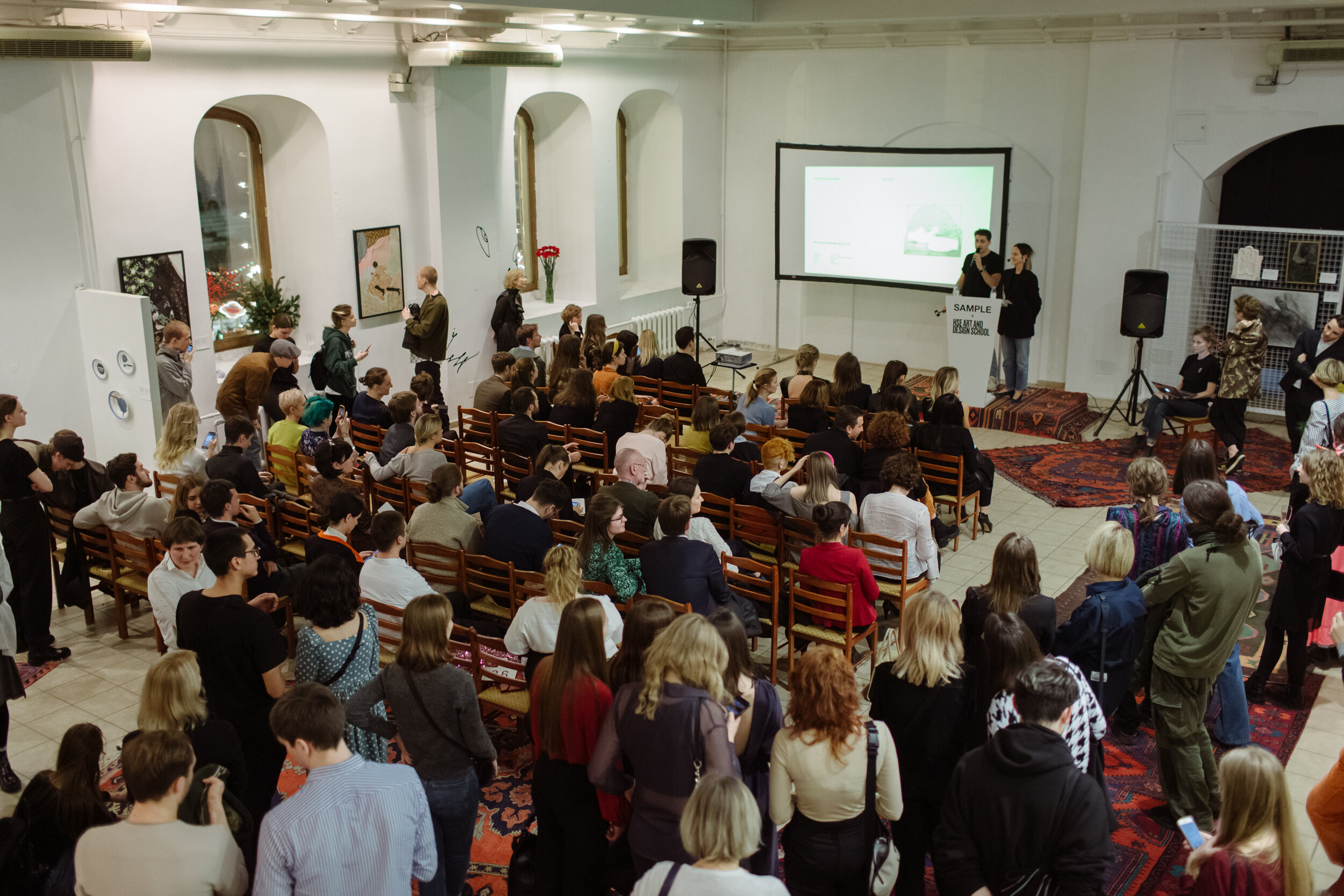
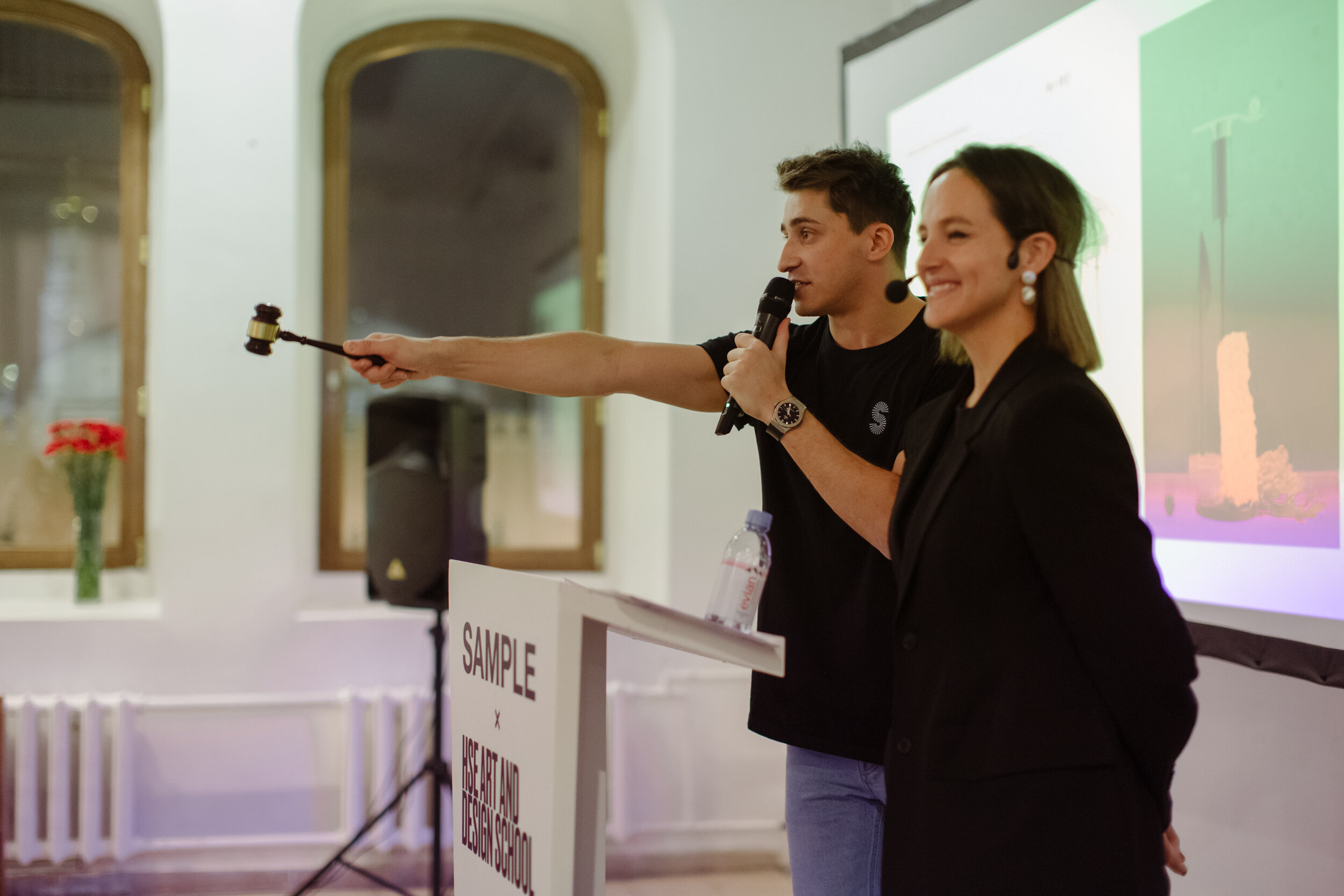

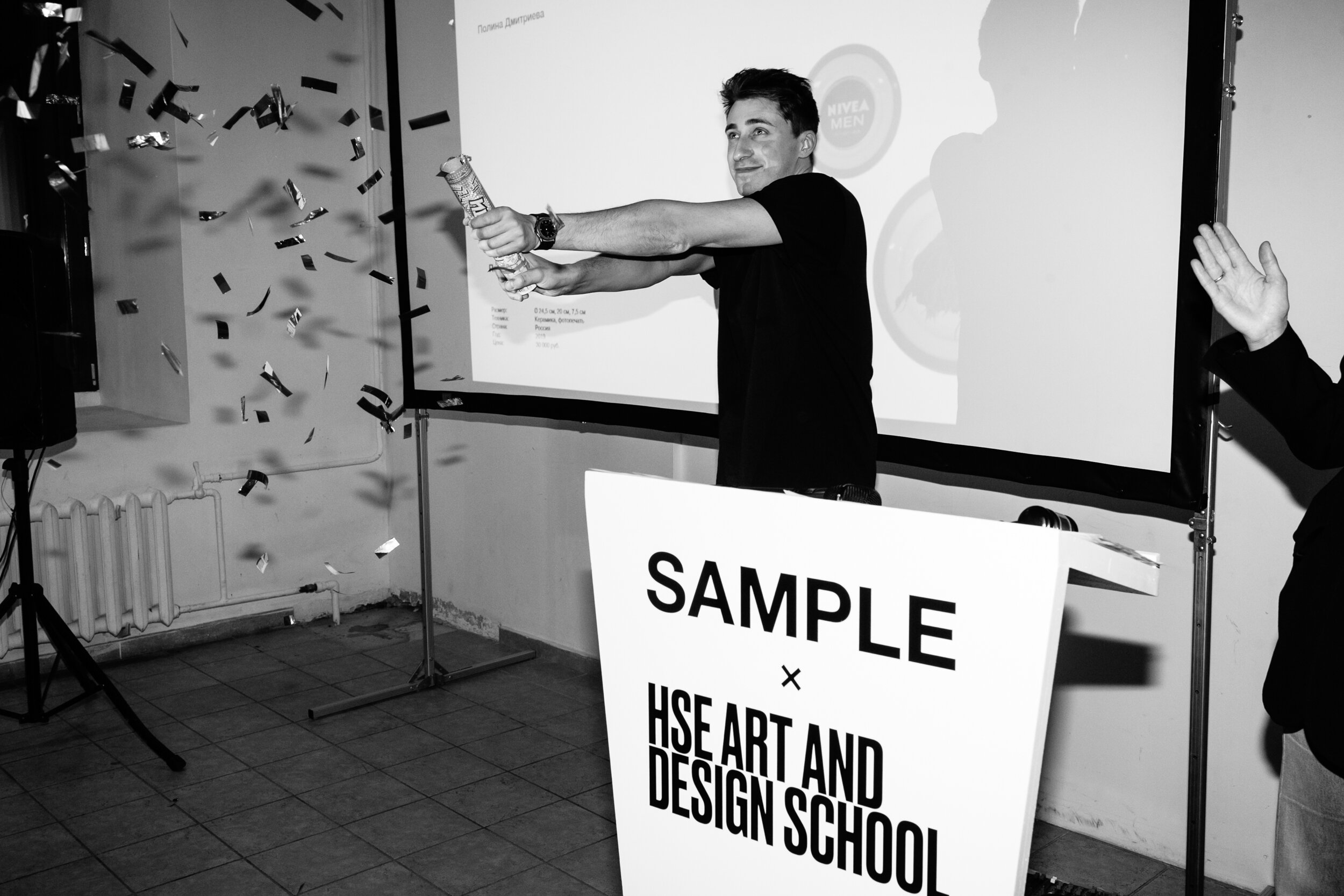
How do you plan to develop? Can you share your plans for the future?
Sofya : At many meetings, we have discussed the issues related to the artists' growth and their desire to expand their activities. There was a dilemma for us: we can stick to our initial model or work with artists exclusively in the format of a more classic gallery. We have decided for ourselves that the project should live as an online gallery first of all, as we originally conceived it, with equal conditions for all artists. Therefore, if an artist reaches a kind of 'ceiling' with us and he wants more international exhibitions for his career, a more exclusive approach, he can go on to work more with a classical gallery. While our main aim is to search, discover new names and support young artists.
Anna : Yes, the SAMPLE project has always been different from the classic gallery model, and I always liked to think of it as a dynamic project. Our goal is to make new young artists visible to the professional community and collectors. Moreover, along with the artists, over these four years, the pool of our collectors has grown. A lot of them were starting with something simple and gradually have come to a more conscious and deep understanding of their interests and desires. So we can say that this is also part of our mission.
The Artsy platform is a pioneer of online art commerce. Their innovative approach is mostly based on the concept of democratisation of the art market and making works of art accessible to everyone. It is partly due to the focus on the audience and dialogue that they can build with it. Can you tell us more about how you build relationships with your audience?
Alexandra : The audience of the project is very different, and it comes from variable places. Probably, we are one of the many projects that make a lot of effort to address our audience directly. We work to increase the number of collectors, to democratise the process itself and make it as transparent as possible for all participants. We are eager to listen to our audience and make online and offline events that match their expectations. I think that the global trends that we see today, in general, contribute to more direct interaction with the audience, and we, being a part of this new wave, want to develop the SAMPLE project accordingly.
The SAMPLE project works mostly with young artists: how do you find them? How do you conduct the selection process? Which criteria do you apply?
Sofya : When we started the project, this process was very natural. Anna studied at the British Higher School of Design and Art in Moscow. I finished at Goldsmiths University in London. We both were always naturally surrounded by a large number of artists, and we often visited exhibitions at other art universities. When the project was launched, we tried to make it unique by inviting a lot of foreign artists whose names are somehow strengthened by the universities. We both worked in the industry for a while, and we both knew quite a lot of artists. This process was not hard at all, and we've collected our first pool of artists in a short period, many of whom are fortunately still with us.
A lot of new artists have joined us since then, and, for me, visits to student graduation exhibitions are still a helpful tool for selection. But besides, Instagram has become a simple but convenient tool in this process. Today, almost every artist has his professional profile, and the Instagram algorithm often helps us to find new names unexpectedly. Our Instagram direct chat with Anna looks like an endless exchange of artists' works and new profiles. In terms of criteria, we do not have any specific ones. The only important one for us is the price. We try to work with artists who have affordable prices. In general, we rely on our taste and sense of what the project currently needs. For example, if we see that we have recently presented too much interior abstraction, we try to add something more conceptual for the next event. For us, the selection is a very lively and intuitive process.
Editor’s pick on SAMPLE online gallery ↓ by Daria Sazonova
Under which conditions do you work with artists?
Anna : We work with artists on the contract commission basis. The pool of artists is regularly updated, and we try to work with new artists, discover new names. Artists grow up with us, and we are happy when big galleries, which are interested and ready to invest in their development, win them over us.
How do you manage issues related to art storage and logistics?
Alexandra : We have a small team, only three people, and two managers who work with artists, maintain the platform and social networks. Therefore, we do many things ourselves, including logistics. Until recently, it wasn't easy to find partners in this area, but after a fair that we held, we managed to conclude a partnership with Yandex Go (delivery service in Moscow), which significantly eased the delivery issues. Now with the increase in sales, we face the need for better art storage and faster delivery service, so we hope that we can optimise these processes as much as possible and continue to cooperate with Yandex Go on a local level.
And a very last question. Recently, the Cosmoscow fair held the project BLAZAR YOUNG ART FAIR: it was the first fair of young contemporary art and 28 of your artists participated there. Can you share with us your impressions of the fair, which is one of the first large-scale events that the SAMPLE project participated in after lockdown?
Alexandra : We are happy with the results of the fair. It was pleasant to see our regular guests and collectors at the event, but it was even more pleasing to see a completely new and unfamiliar audience. We saw a lively interest from thousands of people who came to see, buy, and learn something about contemporary art and artists.
Follow SAMPLE et the team on Facebook & Instagram, or go art scrolling on their online gallery.

